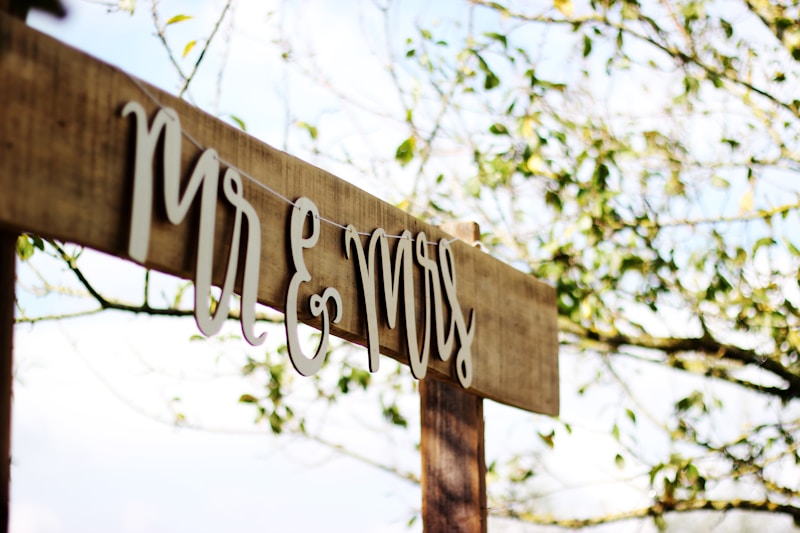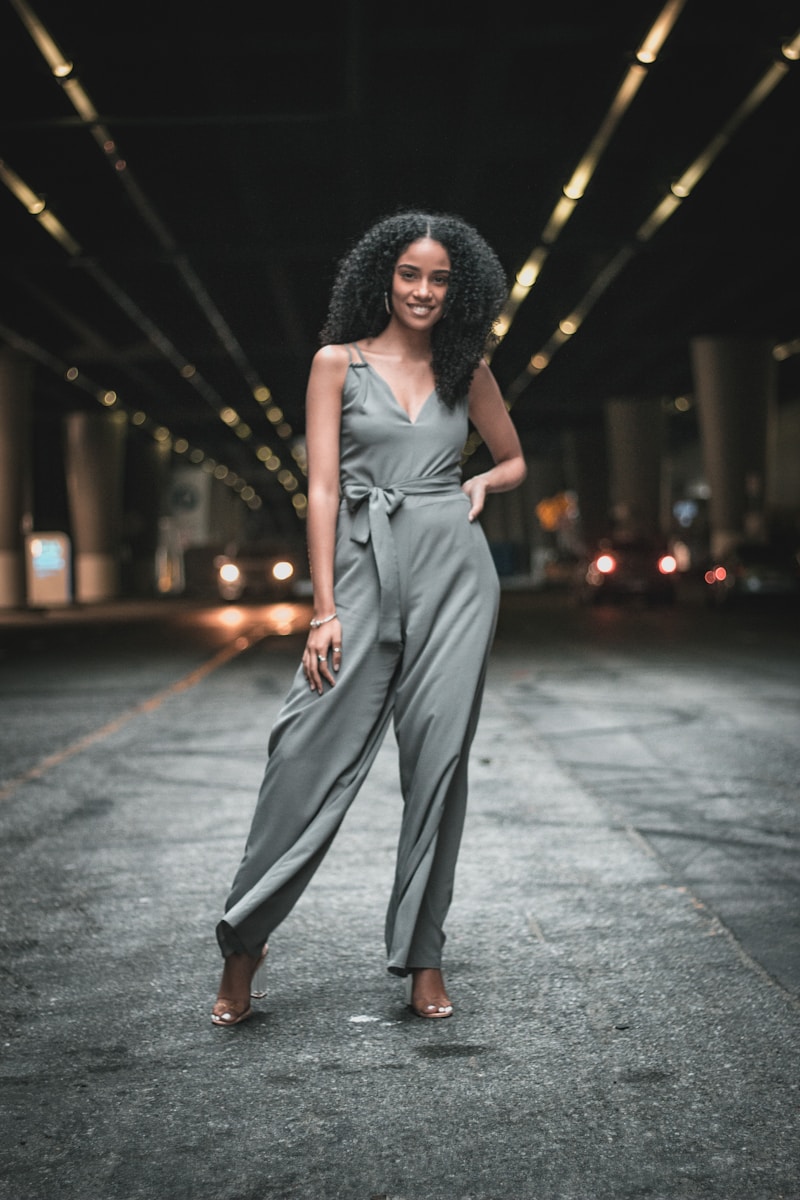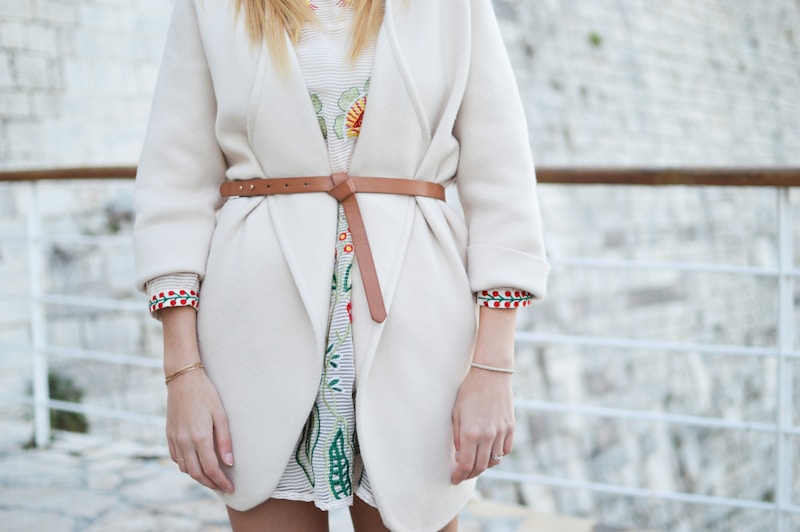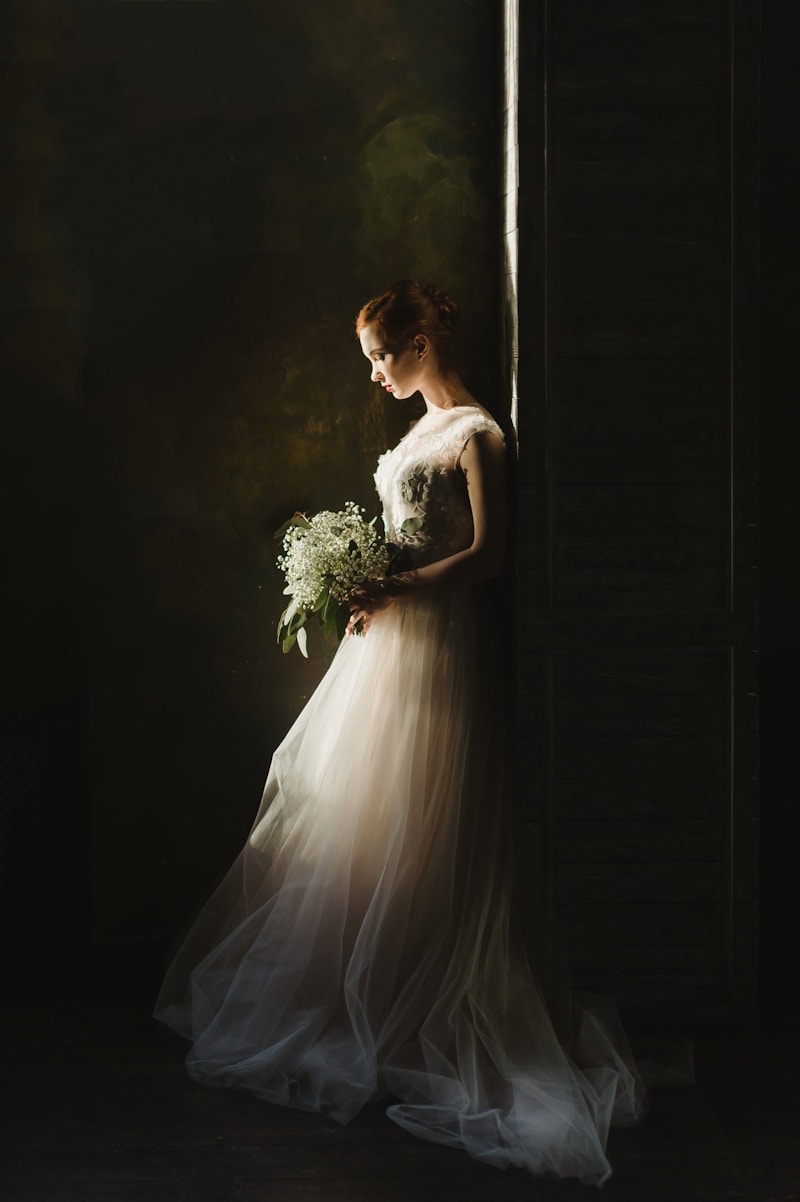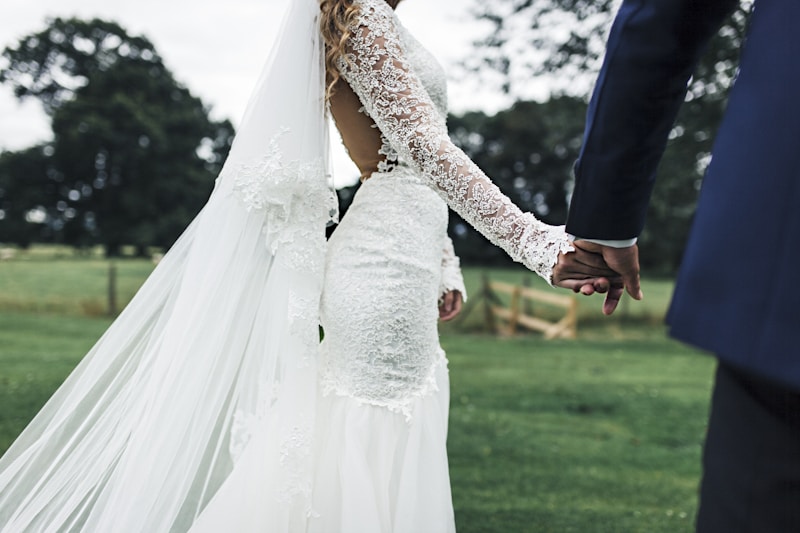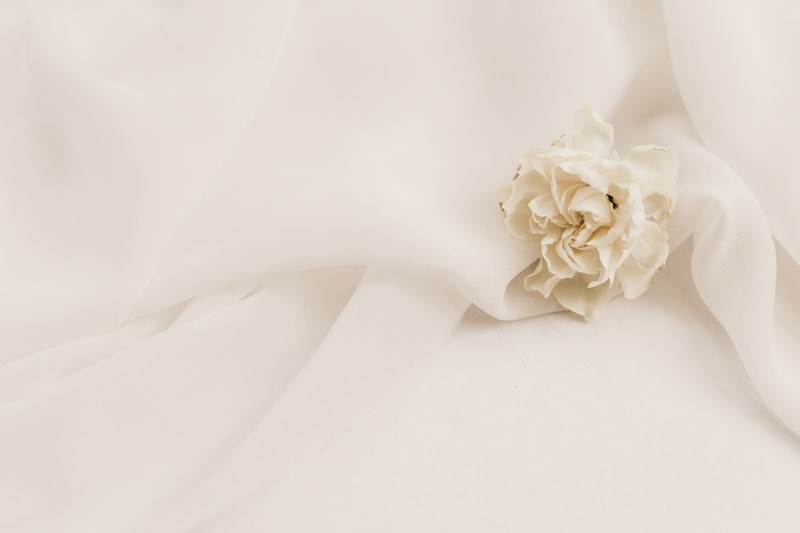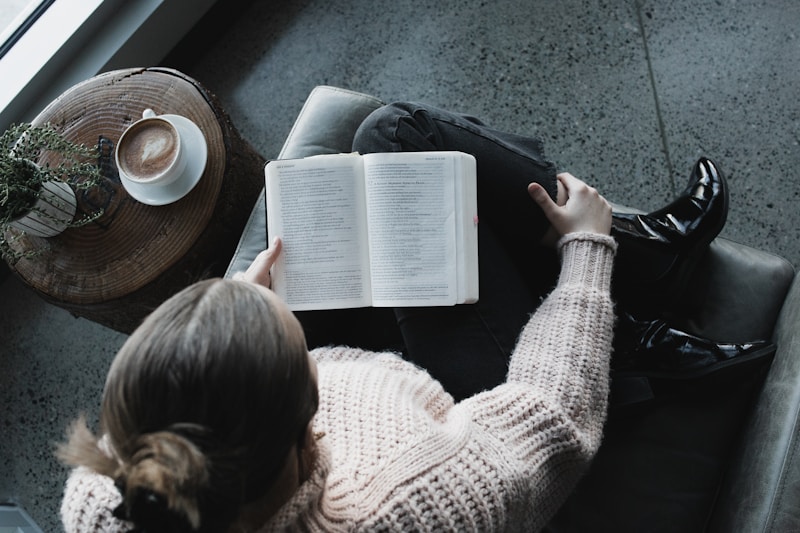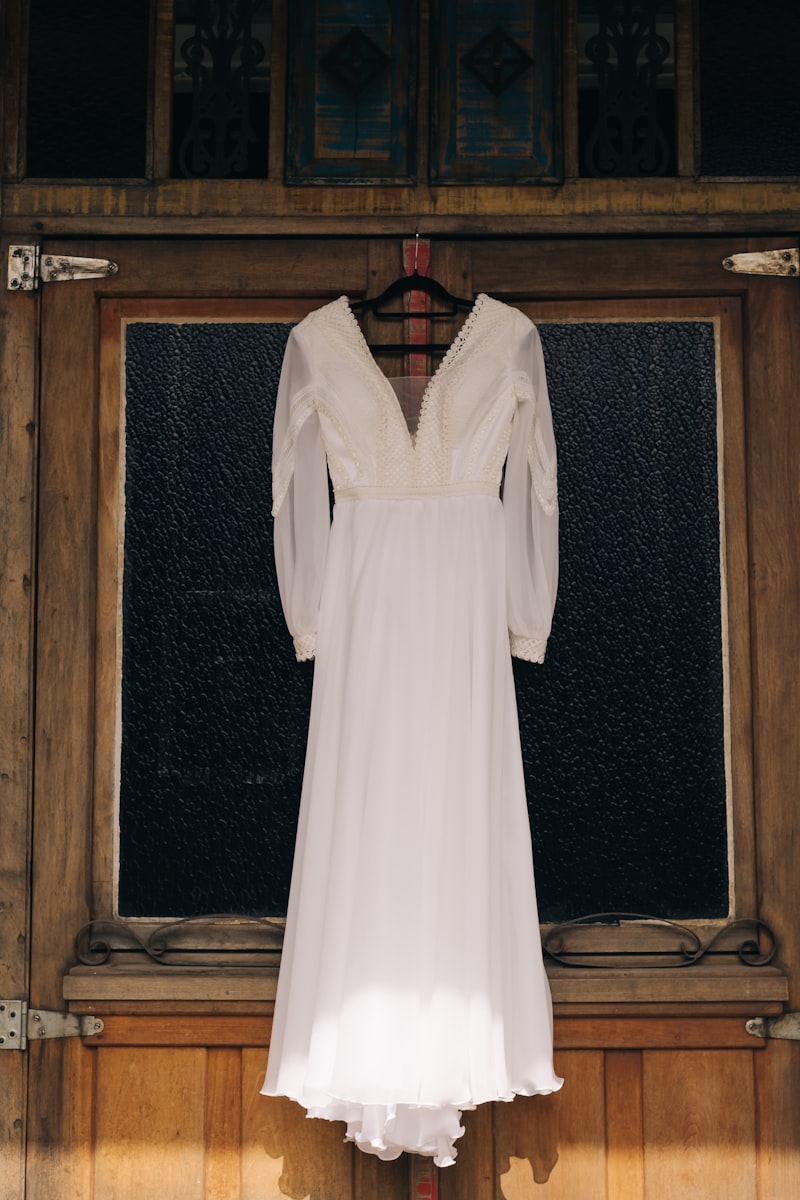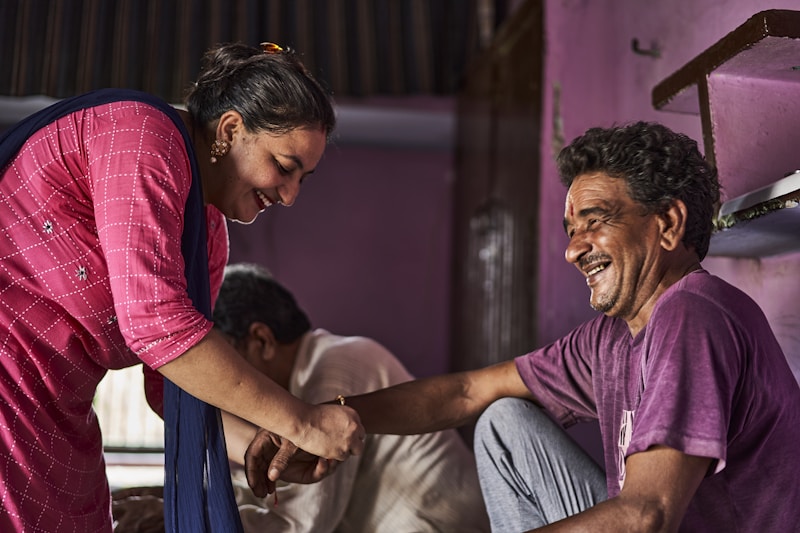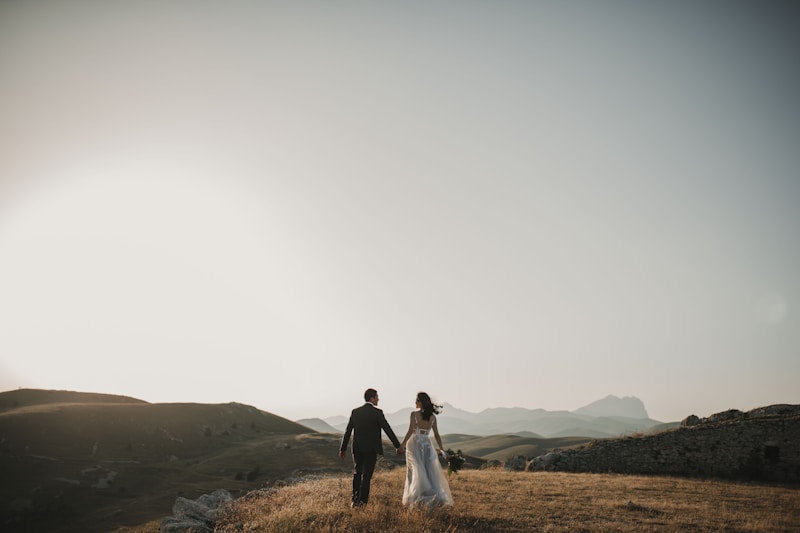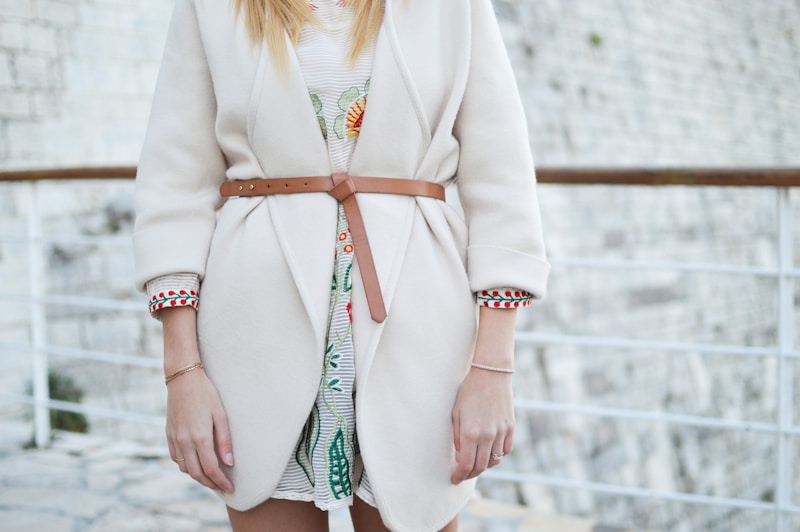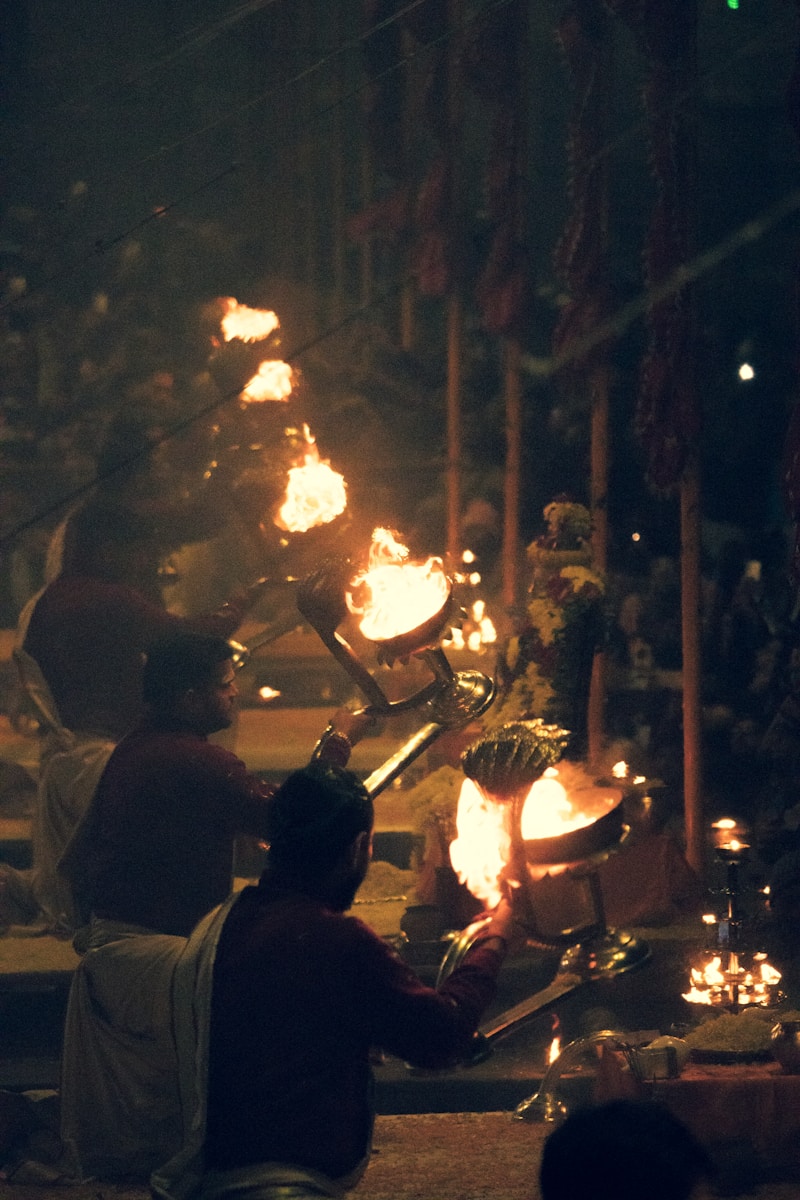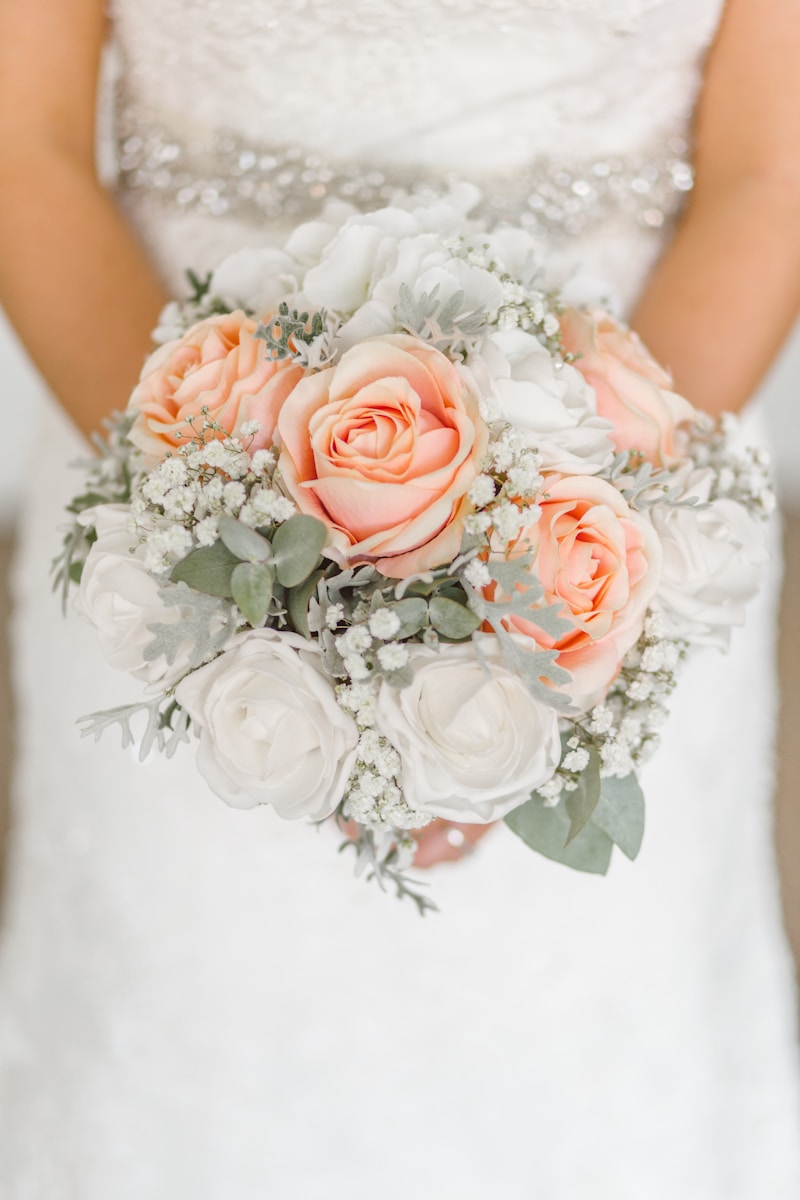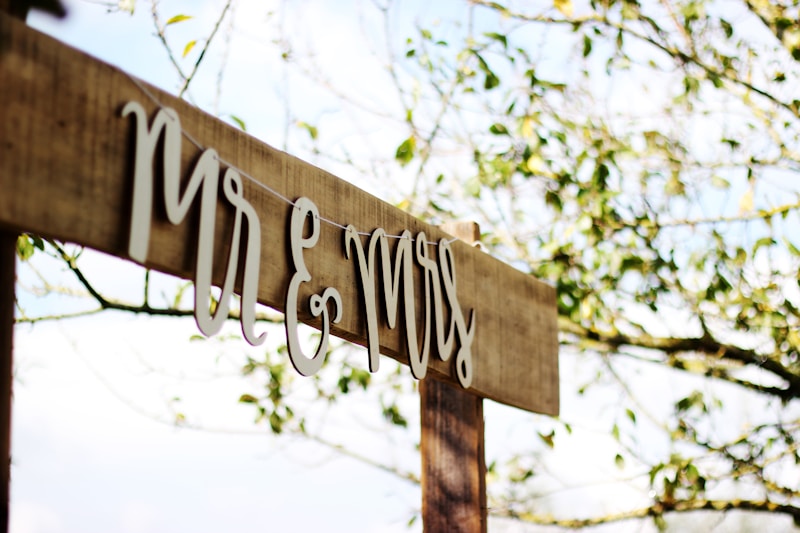The Cultural Significance of Wedding Dresses: A Global Perspective
Wedding dresses are not just garments; they represent deep-seated cultural beliefs, traditions, and values that vary across the globe. With each community's unique customs, the significance of what a bride wears on her special day is immense, serving as a symbol of love, commitment, and cultural heritage. This article delves into the cultural significance of wedding dresses, exploring their meanings in various societies while highlighting related concepts and practices.Introduction to Wedding DressesAt its core, a wedding dress is a symbol of a bride’s transition into a new life. The style, color, and design of the dress can carry different meanings in different cultures. For instance, while white wedding dresses symbolize purity and innocence in many Western cultures, red dresses are traditionally worn in many Asian countries as symbols of good fortune and joy.The Evolution of Wedding DressesBeyond their cultural significance, wedding dresses have undergone significant changes throughout history. Here’s a timeline of the evolution of wedding dresses:EraStyleColor SignificanceMiddle AgesHeavy textiles, layered garmentsColors varied; blue associated with the Virgin MaryVictorian EraElaborate designs, full skirtsWhite popularized by Queen Victoria; symbol of purity20th CenturyModern silhouettes, diverse stylesColors broaden to include pastel shades and vibrant hues21st CenturyEclectic trends, non-traditional choicesPersonal significance outweighs traditional meaningsCasual Refl...
Exploring Mythology and Folklore in Bridal Fashion Concepts
The intricate world of bridal fashion is not just about trends and styles; it's steeped in rich narratives and cultural backgrounds. An intriguing aspect of this realm is the influence of mythology and folklore, which plays a significant role in shaping bridal concepts. From ancient traditions to modern interpretations, these elements create a unique tapestry that defines bridal aesthetics. In this article, we delve into the various ways mythology and folklore inspire bridal fashion, intertwining stories and symbolism to craft unforgettable wedding looks.The Essence of Mythology in Bridal FashionMythology encompasses the myths and stories of different cultures, often depicting gods, goddesses, and legendary creatures. When it comes to bridal fashion, these tales inspire designers to integrate various mystical elements into the attire, which reflects both beauty and cultural significance. For instance, Greek mythology introduces us to the concept of the “bride of Zeus,” where bridal gowns are designed with flowing fabrics and ethereal silhouettes, echoing the grace of goddesses like Hera and Aphrodite.The Role of Colors and SymbolsColors in mythology often hold significant meanings. In many cultures, white is chosen for weddings as it symbolizes purity and new beginnings. However, in Chinese folklore, red is the dominant color for bridal fashion, representing luck, joy, and prosperity. As such, it’s common to see brides adorned in beaded red qipaos or traditional Chinese weddi...
Fashion Revolutions in Wedding Dress Styles: A Journey Through Time
Wedding dresses have always captured the imagination of brides, designers, and fashion enthusiasts alike. Over the years, styles have evolved dramatically, leading us through myriad trends and cultural influences. This article explores the fashion revolutions in wedding dress styles, the factors that have shaped these changes, and the latest trends that continue to redefine this timeless attire. The Historical Context of Wedding Dresses Wedding dresses have rich historical significance. Traditionally, a wedding dress symbolized purity and wealth. In ancient civilizations, brides wore the best garments they could afford, often in vibrant colors. However, the concept of a white wedding dress originated with Queen Victoria of England in the 19th century, setting off a trend that resonated worldwide. The Evolution of Bridal Fashion As we move through time, we can observe several key revolutions in wedding dress styles: EraStyleCharacteristics 19th CenturyVictorian EleganceFull skirts, long sleeves, lace, and rich fabrics. 1920sFlapper InfluenceShorter hemlines, loose silhouettes, and intricate beadwork. 1950sClassic CoutureFitted bodices and voluminous skirts reminiscent of Christian Dior's New Look. 1970sBohemian VibesFlowy fabrics, floral patterns, and relaxed fit inspired by hippie culture. 2000sModern MinimalismSleek designs, simple lines, and a focus on tailoring. 2020sInclusive and Diverse StylesEmphasis on personalization, non-traditional colors, and body p...
Bridal Fashion as a Reflection of Cultural Identity: A Deep Dive into Traditions and Trends
IntroductionBridal fashion is not merely a representation of style; it embodies cultural identity, heritage, and tradition. Around the world, wedding attire reflects the values and beliefs of various cultures, making each bridal gown, veil, and accessory a symbol of deep-rooted customs. This article explores the intricate relationship between bridal fashion and cultural identity, examining different cultural practices and trends while highlighting the importance of understanding this connection.The Historical Context of Bridal FashionBridal fashion has evolved tremendously over centuries. While today’s weddings may feature stunning gowns designed by elite fashion houses, the foundation of bridal attire is deeply rooted in cultural practices. Traditional outfits often include symbolic colors, fabrics, and designs that convey a bride's cultural background.Traditional Wedding Attire Across CulturesCultureTraditional OutfitSymbolismIndianSaree or LehengaColorful, symbolizing joy and prosperityChineseQipao (Cheongsam)Red, symbolizing luck and happinessWesternWhite Wedding DressPurity and new beginningsAfricanKanga or DashikiVibrant colors reflecting cultural heritageThis table highlights how bridal fashion varies across different cultures, emphasizing the significance of each outfit in representing cultural identity.Modern Trends in Bridal FashionWhile traditional attire holds immense importance, modern bridal fashion has seen a fusion of styles, integrating traditional elements w...
The Transition from Practicality to Elegance in Bridal Wear
An Evolution in Bridal Fashion Bridal wear has undergone a remarkable transformation over the years. The transition from practicality to elegance in bridal wear captures the heart of this evolution. From the simple, utilitarian designs of the past to the stunningly intricate gowns of today, brides are now presented with a juxtaposition of functionality and opulence. The Historical Context Traditionally, bridal wear was designed with practicality in mind. Women wore dresses that were suitable for their social status and that could be repurposed for ordinary occasions after the wedding. In many cultures, the emphasis was on modesty and utility. However, as society progressed, so did the concept of bridal fashion. Practicality in Early Bridal Wear In the early 19th century, brides often chose dresses that were made from fabrics that could easily be reused. The colors were usually muted, reflecting societal norms. The focus was primarily on the ceremony itself, rather than the attire. As a result, practicality was a high priority, leading to designs that were functional but not particularly ornate. Shifts in Societal Values As the 20th century approached, changes in societal values began to influence bridal wear. The introduction of the white wedding dress by Queen Victoria marked a significant transition in bridal fashion. This was the moment when elegance began to take precedence. The white dress symbolized purity and became a sought-after look for brides around the ...
Embellishment Trends in Historical Bridal Wear: A Journey Through Time
Bridal wear has always been a canvas for creativity, artistry, and tradition. From royal weddings to local ceremonies, the embellishments used in bridal attire tell a rich story of culture and an evolution of style. Understanding the trends in embellishment within historical bridal wear not only offers insight into the fashion of the past but also provides inspiration for modern brides looking to incorporate timeless elements into their attire.The Historical Context of Bridal WearBridal wear has varied tremendously through different periods and cultures. The emphasis on embellishments changed according to socio-economic factors, cultural beliefs, and fashion trends of the time. This transformation saw the use of rich fabrics, intricate embroidery, and accessory embellishments that enhanced the overall aesthetic appeal of the gown.The Role of Embellishments in Bridal WearEmbellishments in bridal wear include a range of decorative details such as:BeadingEmbroideryLaceRibbonsSequinsAppliquéEach of these elements contributes to making a bridal gown not just a piece of clothing but a representation of the bride’s identity, heritage, and style.Notable Embellishment Trends Through the AgesEraDominant Embellishment TrendKey FeaturesVictorian Era (1837-1901)Intricate Lace and RibbonsUse of layers, complex lace patterns, and satin ribbons to enhance femininity.Edwardian Era (1901-1910)Delicate EmbroideryFocus on floral designs, soft color palettes, and hand-stitched details.1920s Roari...
Luxury vs. Simplicity in Wedding Dress Design: Finding Your Perfect Style
Choosing the perfect wedding dress is one of the most significant decisions a bride will make during the wedding planning process. With varying styles available, brides often find themselves at a crossroads between luxury and simplicity in wedding dress design. This article explores both design philosophies, helping brides to navigate their preferences and find the ideal gown for their special day.Defining Luxury and SimplicityBefore diving into the debate, it's essential to define what we mean by luxury and simplicity in wedding dress design.Luxury Wedding DressesLuxury wedding dresses are characterized by opulent fabrics, intricate embellishments, and unique design details. These gowns often feature:High-quality materials such as silk, satin, or lace.Detailed beadwork, embroidery, or appliqué.Structured silhouettes like ball gowns or mermaid styles.Famous designer labels and couture craftsmanship.Simplicity in Wedding DressesSimplistic wedding dress designs focus on clean lines and understated elegance. Features of these gowns may include:Minimalistic fabrics such as chiffon or crepe.Subtle detailing without excess embellishments.Classic silhouettes that emphasize comfort and versatility.Possibly a focus on DIY or customizable options for a personal touch.Pros and Cons of Luxury Wedding DressesProsCons1. Offers a high-fashion look that may impress guests.1. Typically very expensive and may require a larger budget.2. Unique designs that stand out on the big day.2. May not be...
The Evolution of Hemlines and Silhouettes in Bridal Wear: A Journey Through Time
Bridal fashion has always been a fascinating reflection of cultural and societal changes. One of the most visually striking aspects of this evolution is the transformation of hemlines and silhouettes in bridal wear. This article will delve into the history of bridal garments, examining how hemlines and silhouettes have transitioned through the decades, influenced by various factors such as cultural norms, economic conditions, and prominent figures in fashion. By the end of this exploration, you'll gain insights into how modern bridal wear continues to evolve, mirroring trends and sentiments of contemporary society.A Brief History of Wedding AttireThroughout history, the significance attached to wedding attire has varied widely across cultures. The traditional white wedding dress, popularized by Queen Victoria in the 19th century, began a trend that transformed how brides selected their attire. Before Queen Victoria's time, brides often wore their finest dresses, regardless of color. Today, the evolution of hemlines and silhouettes in bridal wear is a testament to both tradition and modernity.Key Historical Influences on Hemlines and SilhouettesUnderstanding the evolution of bridal wear involves examining the various historical eras that shaped fashion. Here are some key influences:EraHemlines and SilhouettesInfluencesVictorian Era (1837-1901)A-line skirts with long trainsQueen Victoria's influence and rigid social structures1920sDrop waist and shorter hemlinesFlapper culture ...
The Influence of Royal Weddings on Bridal Trends
How Royal Weddings Shape Modern Bridal TrendsRoyal weddings have consistently captured the public's imagination, creating a ripple effect that influences bridal trends worldwide. From the iconic lace of Princess Diana's gown to the modern minimalist styles favored by Duchess Meghan, the fashion choices made during these royal ceremonies set the stage for emerging bridal aesthetics. In this article, we will explore how royal weddings shape the bridal industry and offer insights into current and future trends.An Overview of Iconic Royal WeddingsThroughout history, royal weddings have been defining moments, not just for the royal families involved but also for the global bridal market. These high-profile events garner immense media attention, creating a showcase for bridal fashion that resonates with brides-to-be. Here’s a brief overview of some of the most influential royal weddings:Royal WeddingYearKey Fashion ElementPrincess Diana & Prince Charles1981Lace and Silk Taffeta GownKate Middleton & Prince William2011Long Sleeves and Lace OverlayMeghan Markle & Prince Harry2018Minimalist Style with an Open Boat NecklinePrincess Eugenie & Jack Brooksbank2018Vintage-inspired with Low Back DesignThe Power of Media CoverageThe saturation of media coverage during royal weddings plays a crucial role in shaping the bridal market. TV broadcasts, live streaming, social media posts, and fashion blogs explode with coverage, allowing the trends showcased on these platforms to reach millions of ...
The Vibrant Symbolism of Colors in Weddings: A Guide to Understanding Color Choices
Understanding the Symbolism of Colors in WeddingsWeddings are more than just a union of two individuals; they are a celebration rich in tradition, culture, and meaning. One of the most captivating aspects of weddings is the symbolism of colors. The colors chosen for a wedding can convey deep personal significance, cultural heritage, and even the emotions you wish to evoke on such a monumental day. In this article, we will delve into the profound meaning behind various colors commonly used in weddings, helping you navigate the vibrant world of wedding color symbolism.The Power of ColorsColors have a unique ability to influence our emotions and perceptions. Different cultures assign different meanings to colors, and understanding these meanings can help couples choose the perfect palette for their big day. Here’s a brief overview of the emotional and cultural significances associated with various colors:ColorSymbolismCultural SignificanceRedLove, passion, and energyIn many cultures, red is associated with good luck and prosperity, particularly in Chinese weddings.BlueCalm, stability, and trustBlue is often considered a symbol of fidelity, making it a popular choice for traditional Western weddings.GreenGrowth, harmony, and freshnessGreen represents fertility and new beginnings, often incorporated for outdoor and rustic weddings.WhitePurity, innocence, and peaceTraditionally worn by brides in Western cultures to symbolize innocence, although in some Eastern cultures white symbol...
Exploring the Influence of Religion on Bridal Wear: Cultural Significance and Modern Trends
Bridal wear is a fascinating intersection of fashion, tradition, and spirituality. The influence of religion on bridal wear reflects the beliefs and values of different cultures, dictating everything from fabric selection to color schemes and adornments. This article delves deeply into the various aspects of how religion shapes bridal attire across different cultures, highlighting significant trends, rituals, and the continuing evolution in modern bridal fashion.The Cultural Background of Bridal WearBridal wear varies significantly around the world, influenced by local customs and religious practices. In many cultures, weddings are sacred ceremonies steeped in tradition, and the attire worn by brides is often a direct reflection of these religious beliefs. This section examines how religion plays a pivotal role in shaping bridal wear traditions in diverse cultures.Christianity and Western Bridal AttireIn many Western cultures influenced by Christianity, the color white dominates bridal wear, symbolizing purity and innocence. The tradition of wearing white was popularized by Queen Victoria in the 19th century, and since then, it has become a standard for many brides in European and American contexts. Modern bridal gowns often feature lace, satin, or silk, incorporating various religious symbols like crosses or scripture verses stitched into the fabric.Hindu Bridal Wear: A Celebration of ColorIn Hindu culture, bridal wear is rich in color and symbolism. The traditional saree or...
Exploring the Legacy of Traditional Wedding Dress Designs
Wedding dresses are not merely garments; they are significant cultural symbols that reflect the traditions, beliefs, and heritage of various societies around the globe. One of the most fascinating aspects of these dresses is their evolution over time. The legacy of traditional wedding dress designs is a rich tapestry of history, artistry, and societal values that varies greatly from one culture to another. In this article, we’ll explore this legacy, the elements that define traditional wedding dresses, and how these designs continue to influence modern bridal fashion.The Historical Context of Wedding Dress DesignsWedding dresses have a long history that dates back centuries. In medieval Europe, for instance, brides typically wore their best dresses, which were often not white but rather in rich colors such as red or blue, symbolizing prosperity and joy. It was not until Queen Victoria's wedding to Prince Albert in 1840 that the white wedding dress became widely popularized. This shift marked a pivotal moment in the legacy of traditional wedding dress designs, influencing generations to come.Influences Across CulturesCultural InfluenceStyle ElementsSymbolismEuropeanWhite lace, A-line skirts, veilsPurity, innocenceIndianRed and gold sarees, embellished lehengasProsperity, loveChineseRed qipao, intricate embroideryGood fortune, happinessThe table above summarizes how different cultures employ distinct styles and symbolisms in their traditional wedding dresses.Traditional Wedding...
Exploring the Historical Influence of Royal Weddings
Understanding the Cultural Impact of Royal WeddingsRoyal weddings have captivated the public imagination for centuries, serving as a lens through which we can examine social, political, and cultural changes throughout history. These grand ceremonies are not merely personal unions; they often symbolize larger national sentiments. This article delves into the historical influence of royal weddings, exploring their evolution, cultural significance, and continuing appeal today.The Evolution of Royal WeddingsRoyal weddings date back to ancient times, with each generation leaving its distinct mark. They have transitioned from private ceremonies to globally televised events, reflecting shifts in societal values and technology. Key milestones in royal wedding history include:YearEventSignificance1558Queen Elizabeth I's Potential MarriageHighlighting the political weight of royal unions....
An In-Depth Exploration of Ancient Rituals in Bridal Customs
Understanding Ancient Rituals in Bridal CustomsThe significance of ancient rituals in bridal customs cannot be overstated, especially as they represent the rich tapestry of cultural heritage across various civilizations. From elaborate ceremonies to simple symbolic acts, every ritual serves to deepen the meaning of matrimony. This article will provide a comprehensive overview of these rituals, examining their origins, variations, and modern adaptations.The Importance of Bridal CustomsBridal customs are not merely ceremonial acts; they embody the values and beliefs of a community. Many of these rituals have been passed down through generations, influencing how weddings are celebrated today. Understanding these traditions is crucial for anyone interested in the cultural aspects of marriage.Rituals Across Different CulturesThroughout history, various cultures have developed distinct bridal customs, each filled with ancient rituals. Below are some notable examples:CultureRitualDescriptionIndianMangalsutra CeremonyA sacred necklace presented to the bride, symbolizing marriage and prosperity.ChineseTea CeremonyA traditional event where the couple serves tea to their families, signifying respect and familial bonds.WesternThrowing of the BouquetA...
Exploring the Regional Variations of Bridal Gowns: A Cultural Journey Through Wedding Attire
Weddings are a significant cultural celebration that varies immensely around the world, and so do bridal gowns. Each region boasts unique styles influenced by cultural traditions, local materials, and fashion trends. In this article, we'll delve into the regional variations of bridal gowns, examining how geographical, cultural, and social factors play a role in shaping these beautiful garments.The Influence of Geography on Bridal GownsGeography significantly affects the style and design of bridal gowns. From the intricate embroidery of Indian lehengas to the minimalist sophistication of Scandinavian dresses, each region has distinct characteristics that reflect its environment and culture.RegionBridal Gown CharacteristicsAsiaVivid colors, intricate designs, often heavily embellished with embroidery and beading.EuropeClassic styles, often in white or ivory, with lace detailing and romantic silhouettes.AfricaVibrant colors, unique patterns, often incorporating traditional fabrics like kente.North AmericaDiverse styles ranging from traditional white gowns to contemporary chic designs.South AmericaBright colors with a mix of traditional and modern styles, often with detailed craftsmanship.Bridal Gowns in AsiaIn Asia, the bridal gown reflects the plethora of cultures and traditions. For example, in India, brides typically wear a lehenga, a three-piece outfit consisting of a long skirt, a blouse, and a dupatta (a long scarf). These outfits are rich in color and heavily adorned with...
Ceremonial Meaning of Wedding Dresses: A Cultural Exploration
The wedding dress is more than just a garment; it symbolizes love, tradition, and a new beginning. Across cultures, the ceremonial meaning of wedding dresses varies significantly, reflecting historical beliefs, societal norms, and family traditions. This article will delve into the different meanings behind wedding dresses around the world, the significance of colors, styles, and how they represent a bride's identity. Historical Significance Throughout the ages, wedding dresses have been emblematic of societal values and cultural heritage. In ancient civilizations, brides often wore dresses made from specific materials or colors that held symbolic meanings. For instance, in ancient Rome, brides donned a tunica recta, a long white dress, symbolizing purity and simplicity. In various cultures, these traditions have evolved, but their historical significance remains imprinted in modern practices. Cultural Variations Each culture associates unique characteristics and meanings with wedding dresses. Let's look at a few prominent examples: CultureWedding Dress StyleSymbolism WesternWhite gownPurity and innocence ChineseRed qipaoHappiness and good fortune IndianLehengaTradition and beauty JapaneseShiromukuElegance and respect for tradition The Symbolism of Color in Wedding Dresses The color of a wedding dress plays a vital role in its ceremonial meaning. In Western weddings, the traditional white dress represents purity and new beginnings, popularized by Queen Victor...
Exploring Fashion Trends in Historic Weddings: A Timeless Journey
Weddings have always been a significant part of human culture, and the fashion trends associated with them reflect the societal values, aesthetics, and traditions of their times. From regal gowns to simple yet elegant attire, fashion trends in historic weddings tell a fascinating story of love, cultural exchange, and creativity. In this article, we will delve into the evolution of wedding fashion from different historical periods, discuss notable examples, and explore the influence of culture and tradition on contemporary wedding styles.The Evolution of Wedding FashionWedding attire has undergone remarkable transformations, influenced by various factors including social class, cultural norms, and technological advancements. Here’s a brief overview of how different historical periods have shaped wedding fashion:PeriodDress StyleKey FeaturesAncient EgyptSimple and FlowingLight linen, honorific accessoriesMedieval EuropeComplex GownsBrocade, long sleeves, veilsVictorian EraExtravagant DressesHigh necklines, intricate lace, petticoatsModern EraDiverse StylesVariety in fabrics, mixes of tradition and modernityHistoric Influences on Wedding AttireThe choice of wedding attire throughout history was often dictated by social status. For instance, royalty and the wealthy would wear extravagant garments adorned with jewels and fine fabrics, while the lower classes wore simpler, more practical clothing. These choices were not just aesthetic but also represented one’s place in society.Not...
Exploring the Evolution of Marriage Traditions Across Cultures
Introduction to Marriage TraditionsMarriage has been an integral part of human society for centuries, serving not only as a bond between individuals but also as a significant cultural institution. The evolution of marriage traditions reflects the changes in societal norms, religious beliefs, and cultural values. In this article, we will explore how marriage traditions have evolved over time and across different cultures, focusing on various dimensions such as ceremonies, customs, and legal aspects.The Historical Perspective of Marriage TraditionsMarriage has existed in various forms since ancient times. Initially, marriages were often arranged for economic and strategic reasons, rather than love. The concept of romantic love as a foundation for marriage is a relatively modern phenomenon that began to gain traction during the Renaissance in Europe.EraMarriage CharacteristicsAncient TimesArranged marriages, the exchange of dowriesMedieval PeriodInfluence of religion, consolidation of power among familiesRenaissanceRomantic love emerges, an increase in individual choiceModern EraLegal recognition, same-sex marriage, and cultural diversityThis table illustrates the transformative nature of marriage across different historical periods, highlighting how societal influences shaped traditions.Cultural Variations in Marriage TraditionsAs societies evolved, so did their marriage traditions. Every culture has unique practices that reflect its values and beliefs. Here are a few examples ...
Exploring Bridal Fashion in Different Eras: A Timeless Journey Through Styles
Bridal fashion has evolved dramatically over the centuries, reflecting societal changes, cultural influences, and evolving styles. From the opulent gowns of the Victorian era to the sleek silhouettes of modern-day nuptials, bridal fashion tells a fascinating story of love, tradition, and artistry. This article will explore bridal fashion in different eras, highlighting key trends, iconic styles, and how these fashions have shaped contemporary wedding attire.1. The Ancient Period: Symbolism and SimplicityIn ancient civilizations such as Greece and Rome, bridal fashion was often characterized by simplicity and symbolism. Brides donned flowing tunics made from light fabrics like linen and wool, signifying purity and modesty. The bridal attire was typically adorned with garlands and veils, representing a new chapter in the bride's life.Key Features:Materials: Light fabrics such as linen and woolColors: White and pastel shades to symbolize purityAccessories: Flower garlands and veils2. The Middle Ages: Extravagance and ReligionDuring the Middle Ages, the bridal gown became a reflection of wealth and status. Brides wore elaborate gowns often made of silk, brocade, and velvet, embellished with intricate embroidery and jewels. Religious influence was paramount; brides often chose colors such as blue and green, which were associated with purity and fertility.Iconic Styles:One of the most iconic looks from this era is the ‘kirtle’ and ‘surcoat’ combination, where a fitted gown was laye...
Exploring Folklore and Wedding Dress Customs Around the World
Understanding the Deep Connections Between Folklore and Wedding Dress CustomsEvery culture has its unique stories and traditions, particularly when it comes to weddings. These important life events not only symbolize love and commitment but are also deeply enshrined in folklore. Wedding dress customs reflect these cultural narratives, embodying history, belief systems, and shared values. In this article, we will explore various wedding dress customs around the globe, illustrating how folklore weaves itself into the fabric of wedding attire. From the vivid colors of Bollywood weddings in India to the minimalist elegance of Scandinavian nuptials, we will uncover the tales that influence bridal fashion.The Significance of Folklore in Wedding TraditionsFolklore serves as the backbone of many cultural practices, especially weddings. The stories passed down through generations shape not only how we celebrate but also how brides dress for their big day. For instance, in many cultures, specific colors are associated with particular meanings. In Asia, red is often chosen for bridal gowns as it symbolizes luck and prosperity. In contrast, white has become synonymous with brides in Western cultures, representing purity and innocence.Wedding Dress Customs Across Different CulturesRegionDress Color & StyleFolklore InfluenceIndiaRed with intricate embroiderySymbolizes marriage, prosperity, and fertilityChinaRed dress (Qipao or Cheongsam)Brings good fortune and happinessWestern CountriesWhi...
